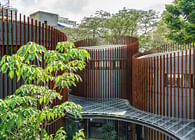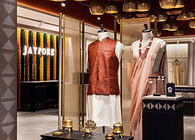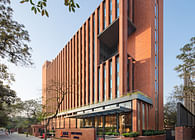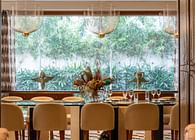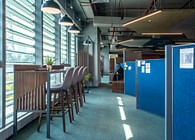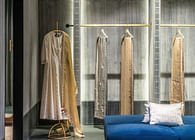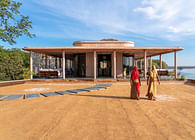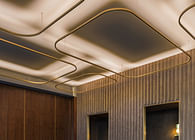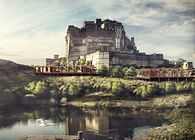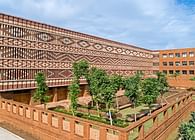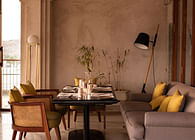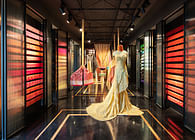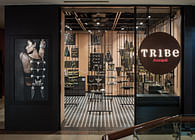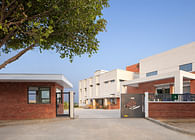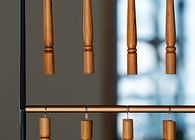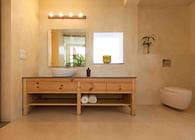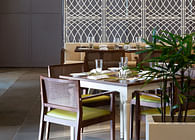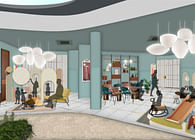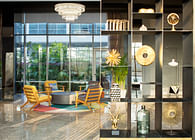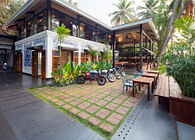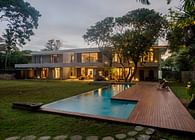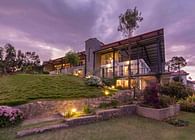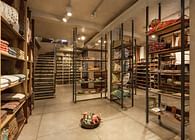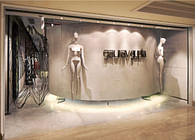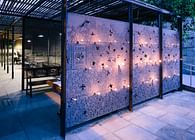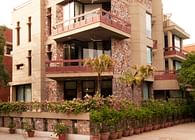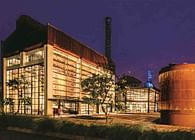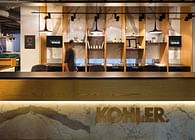
New Delhi, IN
The Baradari at City Palace Jaipur in Rajasthan cites an insightful example of how design brings inherent value to a place whereconventions on conservation and adaptive re-use are looked at through a fresh lens.
CONTEXT
The royal family of Jaipur invited Studio Lotus to redevelop the 14,000 sqft area of the former palace café as a fine-dining destination. The brief was to expand the relatively non-descript café to include a private dining area, bar and various private lounges, along with a quick service counter to the program, while retaining the back of the house facilities in their current location.
DESIGN APPROACH
By means of an intensive study of the manner in whichthe existing space functioned, the additional spaces available and how the proposed expanded program would function best, the design principles are derived from the .
Applying its literal meaning of ‘Baradari’. As a guiding philosophy, the planning approach uses the design of the Baradari to extend the Museum and open up the entrance of the Palace - thus connecting it to the city. The design methodology of opening and connecting, also applies the same at the emotional level – by inspiring both tourists and locals to look at the older space from a fresh perspective. The interventions sought to achieve this by re-presenting the architecture and craftsmanship of Jaipur in a way that would inevitably tie it to the region and yet be a contemporary expression.
DESIGN INTERVENTION
The existing buildings have been restored by stripping them of layers of paint and cement plaster. The exposed rubble masonry has then been repaired with lime mortar with details that are formed in lime plaster.A key conceptual move has been the use of the courtyard as a binding element for the new spaces and program, rather than just as an extension of the restaurant. This led to the dismantling of an old structure in the middle of the courtyard that was being used as a toilet and replacing it with a contemporary Baradari or Pavilion. Visually opening up the space, the Baradari divides the two zones flanking the courtyard while anchoring them, and endowing the place with a key identity.The newly-designed areas now accommodate 200 covers across its breadth of spaces comprising the bar, lounge, restaurant and private dining room.The courtyard terminates at one end in a fluted marble water cascade that helps create a micro-environment. It cools the courtyard in the summer while drowning out noises from outside. Marble benches line the deep verandahs enveloping the courtyard to create intimate dining spaces.
REINTERPRETING CRAFT
The concept creates a balanced interplay of historic revelations and contemporary additions: both drawing from and interpreting the underlying Indo-Sarcenic influences of Jaipur’s architectural history.
Traditional crafts of Jaipur such as Thikri work, bespoke casting and foundry work, furniture and stone work have been reinterpreted in a contemporary idiom. Infusing modernity and artisanal skills in the vocabulary, new patterns of Thikri work are applied on walls, ceilings and in the niches.From the structure to the flooring and to the furniture units, stone masonry and inlay is seen extensively. The skilled artistry of local craftsmen in marble as a material has been applied in modern syntax for the flooring, the Pavilion, dado work, benches, table tops and more. Housing the island bar, the contemporary Baradari-inspired Pavilion is built using metal, fluted marble and mirrors heightening the historic vocabulary of the existing buildings. Mild steel and brass are used for bespoke lighting and door design.
Constrained budgets encouraged the design team to use a combination of new and existing furniture salvaged from the Palace. Inspired from the hybrid influences, upholstery and weaving patterns were generated to give them a new lease of life.
The layering of design, craftsmanship, materials and even cuisine is what creates the overall experience of the Baradari, defining it as a historic fine dining destination that re-presents Jaipur in the context of today.
Status: Built
Location: Jaipur City, IN
Additional Credits: Design Team:
Studio Lotus – Ambrish Arora, Arun Kullu, Priya Jindal, Sanjay Kumar





